Products
Peat
Peat is an organic soil that is accumulated by decomposition and corrosion of organic matter such as plants.
It is rich in fulvic acid and has excellent breathability and water holding capacity.
In many countries such as Finland, Sweden, and Canada, peat is used in various ways for livestock (bedding), agriculture (topsoil), and other fuels.
It is rich in fulvic acid and has excellent breathability and water holding capacity.
In many countries such as Finland, Sweden, and Canada, peat is used in various ways for livestock (bedding), agriculture (topsoil), and other fuels.
Usage of peat
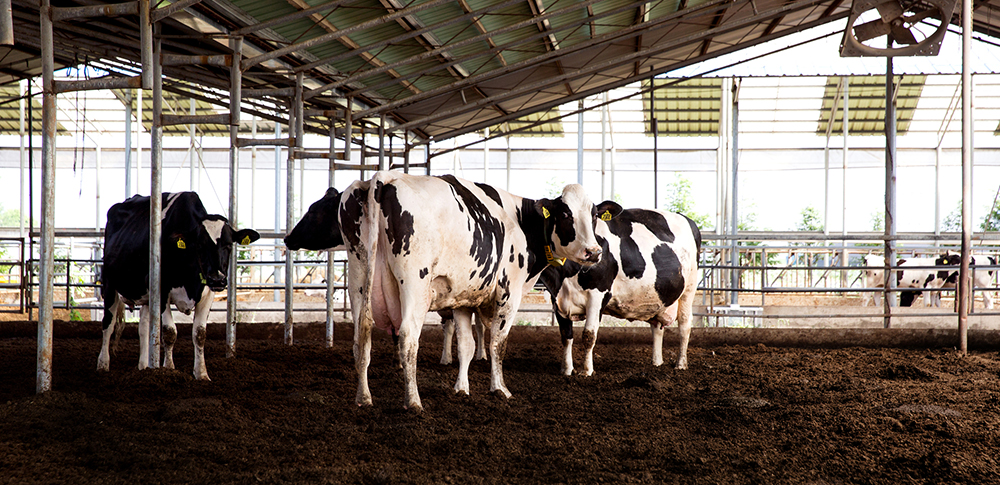
For livestock (bedding)
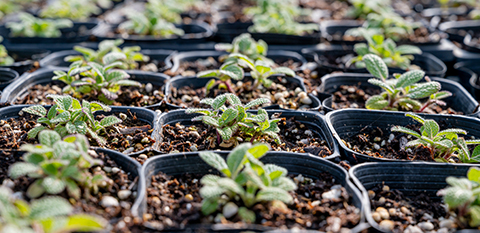
Agricultural use (topsoil)
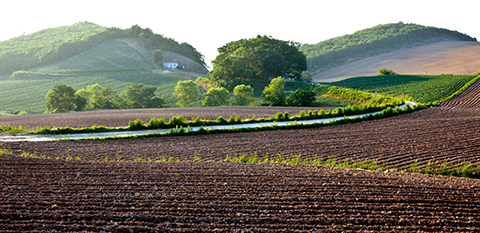
Soil improvement
Features of peat
1.
It has excellent breathability and water-holding capacity.
It has excellent breathability and water-holding capacity.
Peat has numerous pores, which makes it a highly breathable substance with a high water-holding capacity. It is known to retain up to 20 times its weight in water, making it extremely useful for controlling the amount of moisture content on the floor of livestock barns.
2.
It shortens the maturing period of livestock manure compost.
As peat has high microbial content and strong fermenting power due to good ventilation, it shortens the maturing period of livestock manure compost formed in livestock houses by 30% to 50%.
3.
It reduces barn odor.
Peat suppresses ammonia gas (NH3, the main source of barn odor) production by adsorbing ammonium ions (NH4+), which are involved in the production of ammonia, to the surface pores. Also, humic substances in peat (humic acid, fulvic acid, etc.) lower the pH (acidify) of livestock, which reduces the formation of ammonia from ammonium ions and in return decreases the smell of livestock barn.
4.
It creates fertile soil with a high cation exchange capacity.
Peat adsorbs large amounts of cations and thereby absorbs the necessary nutrients. It is effective for soil improvement by enhancing the physical properties of the soil with its high cation substitution capacity and increasing the nutrient retention capacity.
How peat removes barn odor
Its ability to adsorb ammonia (NH3)
A significant contributor to the bad odor of livestock waste is ammonia gas (NH3). Livestock manure contains organic N which when mineralized release soluble NH4+ ions. The NH4+ ions in an aqueous environment are naturally converted to NH3, which are released into the atmosphere by volatilization. (Hao & Benke, 2008) Peat is extremely effective in adsorbing both the NH3 atoms and NH4+ ions from the manure slurry, thereby significantly reducing the odor. (Witter & Kirchmann, 1989) In fact, peat was found to adsorb 2.5% of its dry weight of ammonia gas, which is nearly three times the amount achieved by sawdust and straw. (Peltola, 1986) This is made possible by the numerous pores in peat formed by dead organic matter thinner than a layer of cells, offering significant surface area. Furthermore, peat is weakly acidic and can act as a buffer to restrict the increase in pH upon the addition of manure. This ability to maintain lower pH restricts the conversion of NH4+ ions to NH3. Additionally, the emission of ammonia to the atmosphere is a cause of air pollution, while it also decreases the value of the livestock slurry as a fertilizer due to decreased N content. (McCrory & Hobbs, 2001) For this reason, using peat as litter is an effective, economic, and environmentally-friendly solution for all.
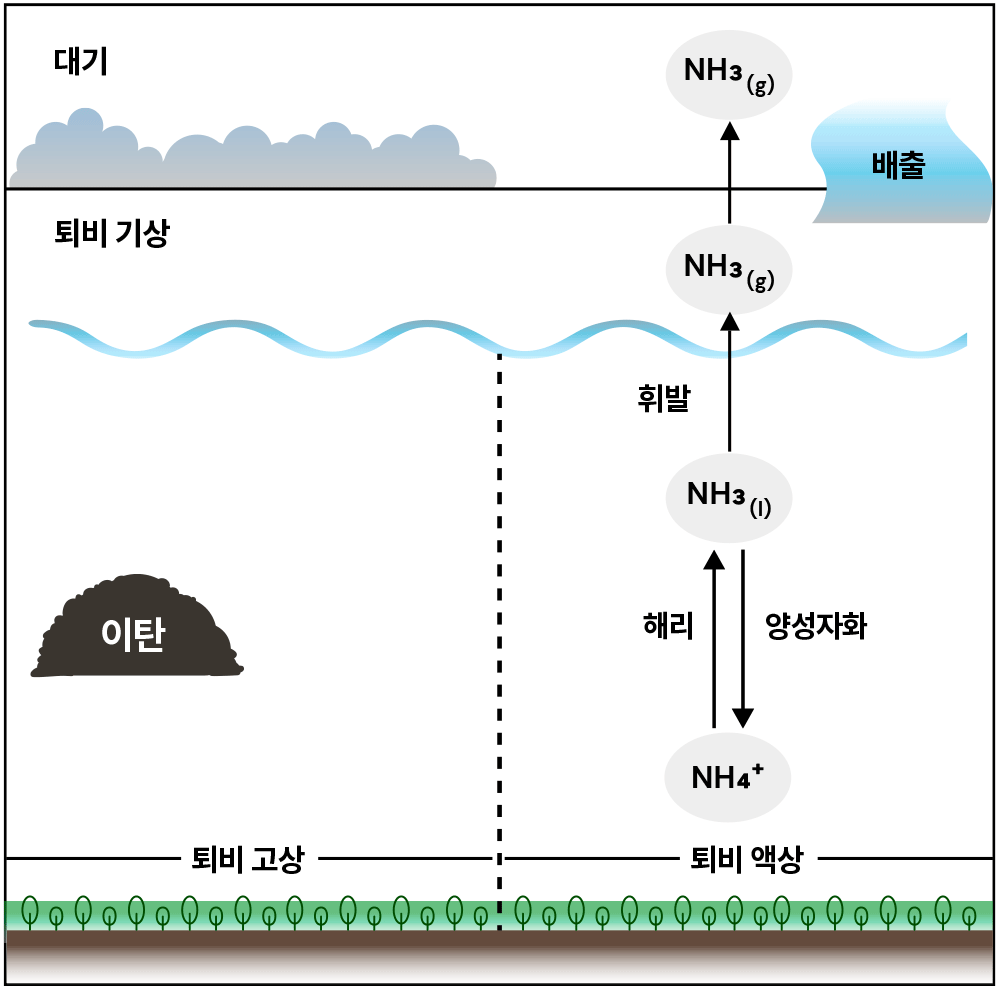
References
Hao, X., & Benke, M. B. (2008). Nitrogen Transformation and Losses during Composting and Mitigation Strategies. Dynamic Soil, Dynamic Plant, 2(1), 10–18. McCrory, D. f., & Hobbs, P. j. (2001). Additives to Reduce Ammonia and Odor Emissions from Livestock Wastes: A Review. Journal of Environmental Quality, 30(2), 345–355. https://doi.org/10.2134/jeq2001.302345x Peltola, I. (1986). Use of peat as litter for milking cows. In V. C. Nielsen, J. H. Voorburg, & P. L’Hermite (Eds.), Odour prevention and control of organic sludge and livestock farming. Elsevier Applied Science Publishers ; Sole distributor in the USA and Canada, Elsevier Science Pub. Co. Witter, E., & Kirchmann, H. (1989). Peat, zeolite and basalt as adsorbents of ammoniacal nitrogen during manure decomposition. Plant and Soil, 115(1), 43–52. https://doi.org/10.1007/BF02220693
Hao, X., & Benke, M. B. (2008). Nitrogen Transformation and Losses during Composting and Mitigation Strategies. Dynamic Soil, Dynamic Plant, 2(1), 10–18. McCrory, D. f., & Hobbs, P. j. (2001). Additives to Reduce Ammonia and Odor Emissions from Livestock Wastes: A Review. Journal of Environmental Quality, 30(2), 345–355. https://doi.org/10.2134/jeq2001.302345x Peltola, I. (1986). Use of peat as litter for milking cows. In V. C. Nielsen, J. H. Voorburg, & P. L’Hermite (Eds.), Odour prevention and control of organic sludge and livestock farming. Elsevier Applied Science Publishers ; Sole distributor in the USA and Canada, Elsevier Science Pub. Co. Witter, E., & Kirchmann, H. (1989). Peat, zeolite and basalt as adsorbents of ammoniacal nitrogen during manure decomposition. Plant and Soil, 115(1), 43–52. https://doi.org/10.1007/BF02220693
Sakhalin peat
The production area is closer.
The production area of Sakhalin peat is significantly closer compared to the peat products originally sold in the domestic market, which are imported from Northern Europe or Canada. We also use our exclusive port in Sakhalin to supply Sakhalin peat at a competitive price.
The supply is stable for long term.
Through a local subsidiary in Sakhalin (Biotex-Torf), a large-scale mining right (reserve amount of 33 million tons) is secured, and by acquiring an exclusive overseas distribution right, a stable supply to the domestic market is possible for a long period.
Standard peat consumption in a livestock barn
Based on one cow room (50m²)
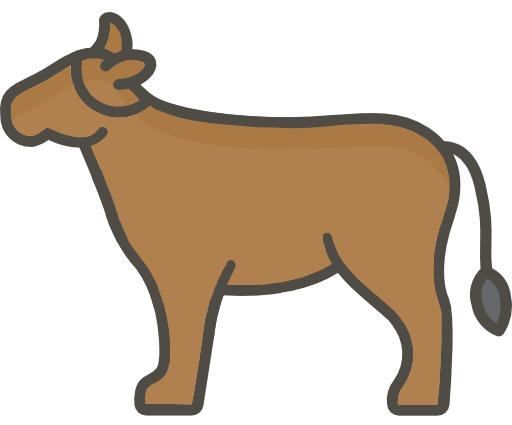
Native Korean cattle farm
1) Calf
– less than 8 months
– 1.5 ~ 2.5 tons (about 7cm)
– 1.5 ~ 2.5 tons (about 7cm)
2) Rearing calf
– 8 months ~ 18 months
– 2.5 ~ 3.5 tons (about 10cm)
3) Fattening cattle (for meat)
– 18 months or older
– 1.5 ~ 2.5 tons (about 7cm)
– 1.5 ~ 2.5 tons (about 7cm)
4) Breeding cattle (cow)
– 1.5 ~ 2.5 tons (about 7cm)
5) Agitation
– Recommended once a week
(at least twice a month)
(at least twice a month)
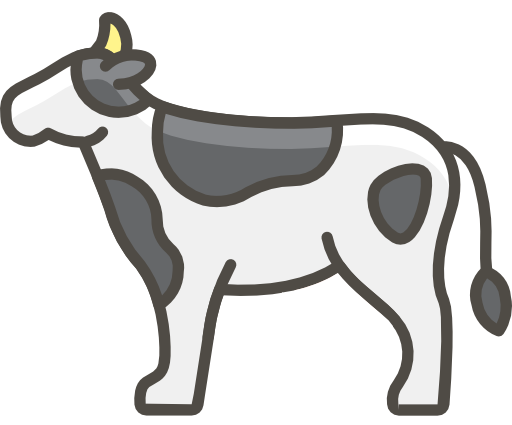
Beef farm
1) Calf
– less than 8 months
– 1.5 ~ 2.5 tons (about 7cm)
– 1.5 ~ 2.5 tons (about 7cm)
2) Rearing calf
– 8 months ~ 18 months
– 2.5 ~ 3.5 tons (about 10cm)
– 2.5 ~ 3.5 tons (about 10cm)
3) Fattening cattle (for meat)
– 18 months or older
– 1.5 ~ 2.5 tons (about 7cm)
– 1.5 ~ 2.5 tons (about 7cm)
4) Breeding cattle (cow)
– 1.5 ~ 2.5 tons (about 7cm)
5) Agitation
– Recommended once a week
(at least twice a month)
(at least twice a month)
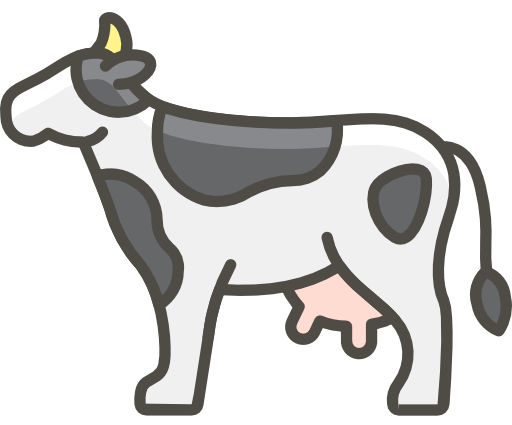
Dairy farm
1) Calf
Follow the standard amounts used on the farm
2) Rearing calf
Follow the standard amounts used on the farm
3) Breeding cattle (cow)
– 2.5 tons (about 8cm)
4) Agitation
– Once a day
※ Note (Precaution)
– The fan is operated all year.
– Periodic agitation maximizes the effect of using peat. (Removal of odors, promotion of maturing, etc.)
– High moisture content of peat stock prevents mammary inflammation and helps to maintain good livestock health against diseases such as skin diseases.
– The fan is operated all year.
– Periodic agitation maximizes the effect of using peat. (Removal of odors, promotion of maturing, etc.)
– High moisture content of peat stock prevents mammary inflammation and helps to maintain good livestock health against diseases such as skin diseases.
Domestic Supply Record and Overseas Cases
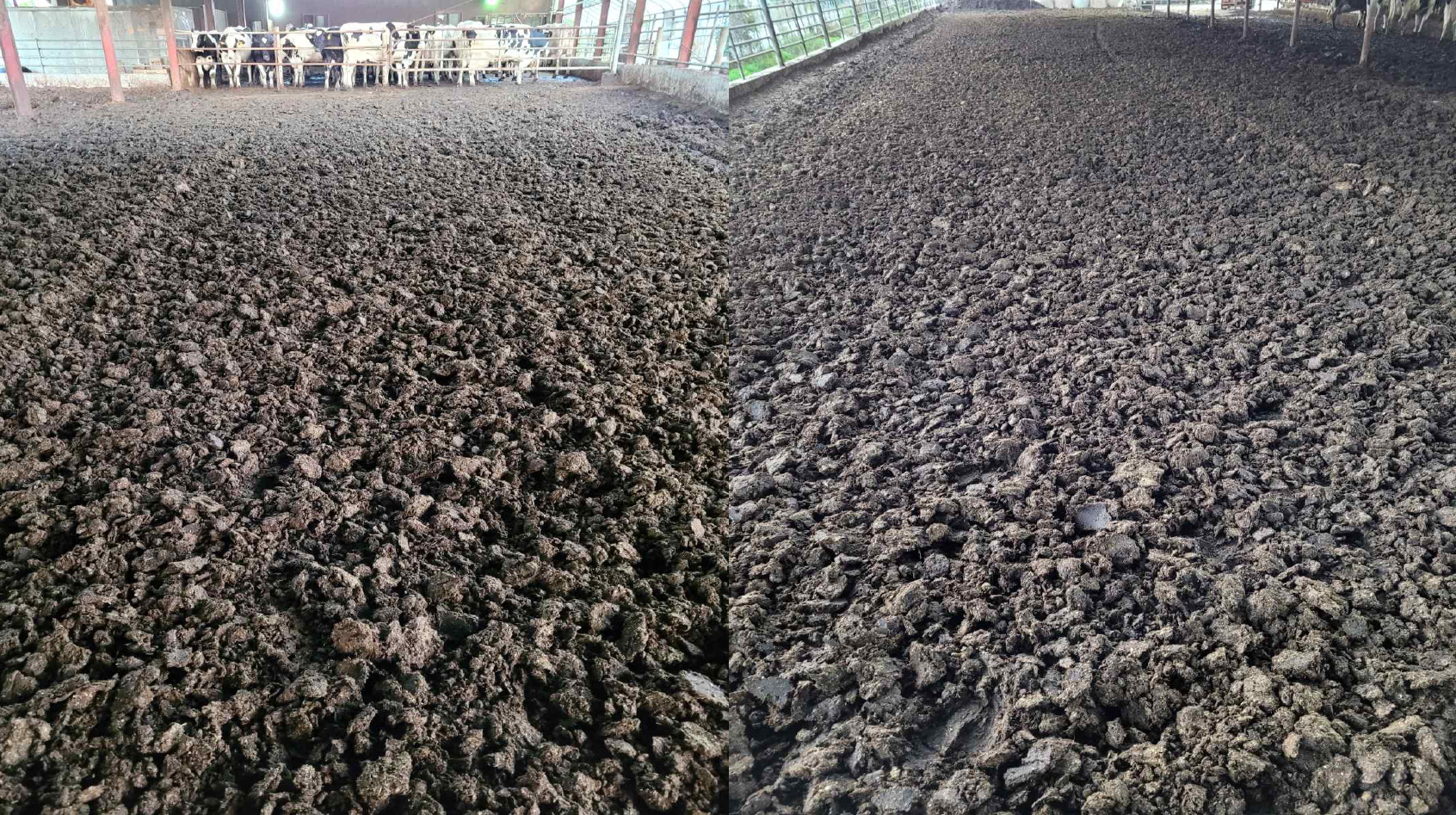

Domestic Supply Record
Leeju Ranch (Goyang)
Dawn Ranch (Paju)
Breeding Pig Improvement Center (Yongin)
Milk Cow Improvement Center (Goyang)
Goyang TMR, Dangjin Dairy Cooperative, Golden Corn (Anseong), Geochang Livestock Cooperative, etc.
Dawn Ranch (Paju)
Breeding Pig Improvement Center (Yongin)
Milk Cow Improvement Center (Goyang)
Goyang TMR, Dangjin Dairy Cooperative, Golden Corn (Anseong), Geochang Livestock Cooperative, etc.

Overseas Cases
In Europe, peat is widely used as the bedding
for livestock barns in Ireland and Sweden.
for livestock barns in Ireland and Sweden.
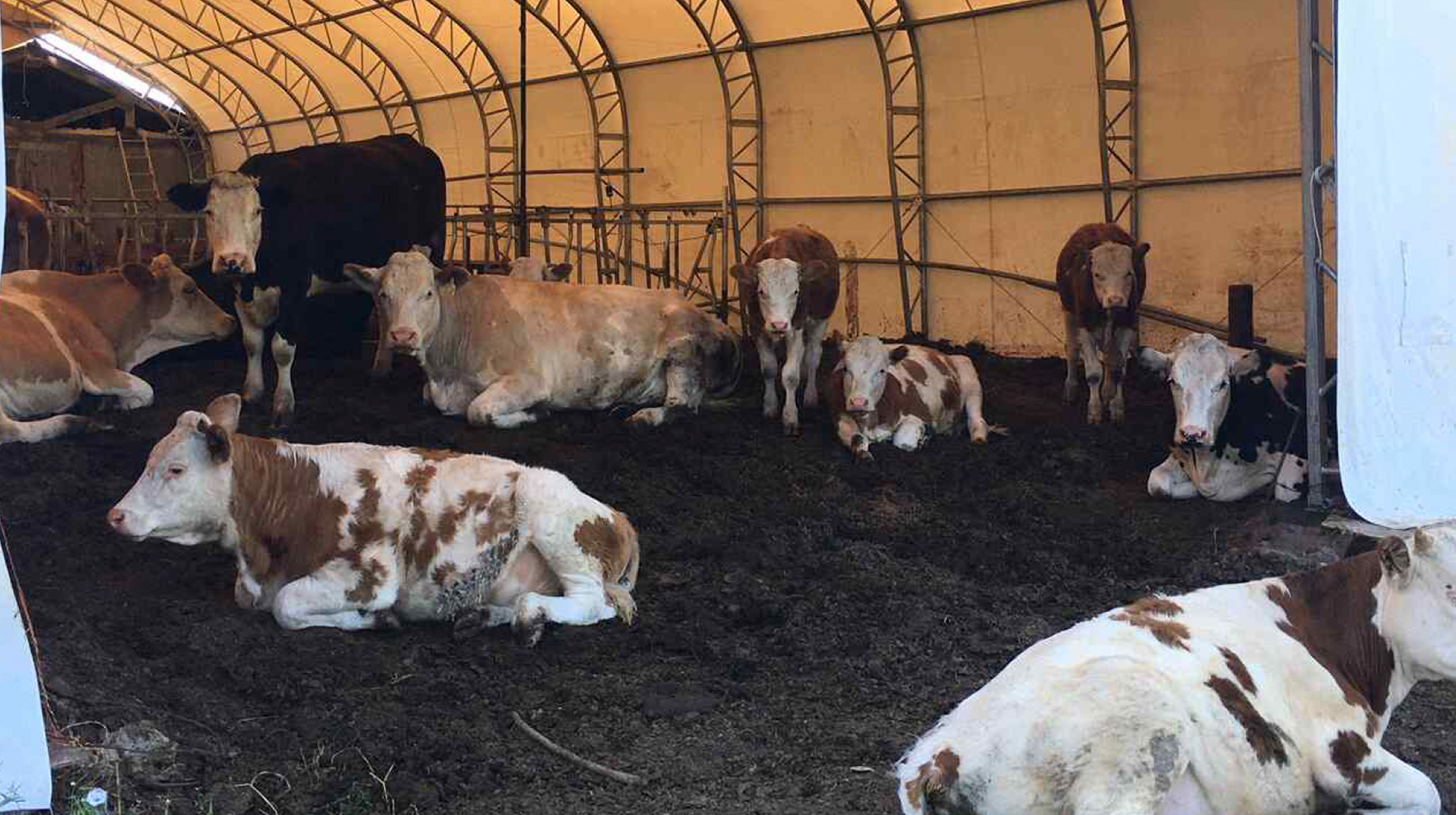
Patents
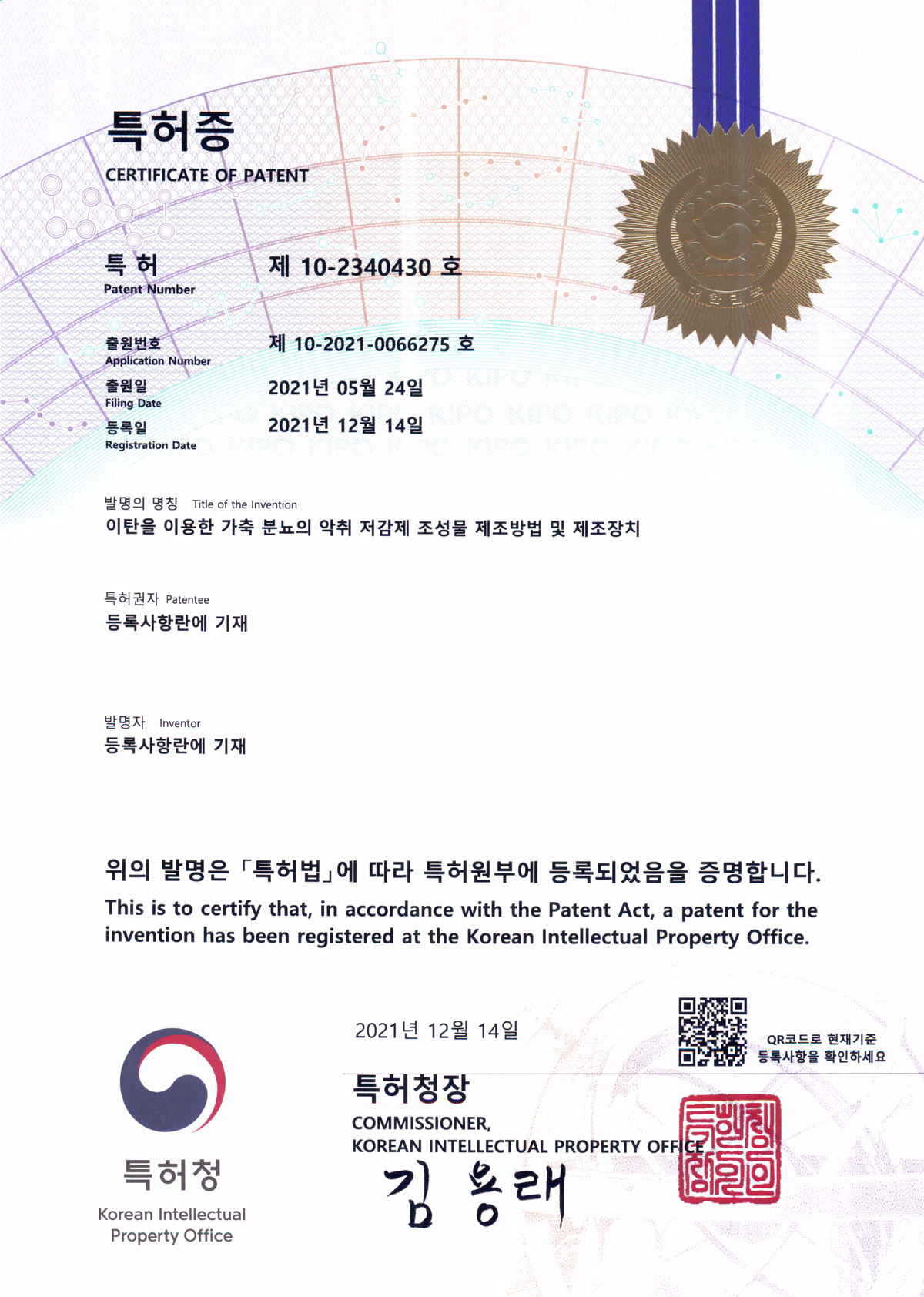
Patent certificate
Patent No. 10-2340430
December 14, 2021
Composition manufacturing method of odor reducing agent for livestock manure using peat and manufacturing devices

Patent certificate
Patent No. 10-2340207
December 13, 2021
Method for manufacturing fertilizer using peat and manufacturing devices